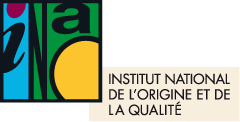90th anniversary exhibition: INAO, a driving force for innovation
Since its creation in 1935, the INAO has constantly innovated to adapt the SIQO to the contemporary challenges they face, without calling into question the "fundamentals" linked to each sign.
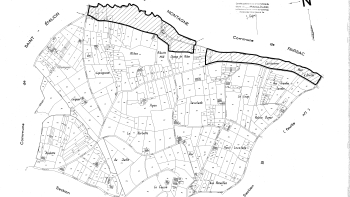
INAO HAS SUPPORTED TECHNICAL PROGRESS IN VITICULTURE TOWARDS QUALITY WINES EXPRESSING THEIR TERROIR
As early as 1936, the INAO broke new ground by defining the first Appellations d'Origine Contrôlée viticoles on a parcel-by-parcel basis, based on soil type criteria defined simultaneously by growers and scientists. Plots are selected by mutual agreement, guaranteeing the production of quality wines.
From 1970 onwards, the INAO tightened up production requirements with the generalization of quality control for AOC wines before they were put on the market. It provides a rigorous framework for practices, notably by setting a maximum yield per hectare or defining the conditions for enriching the harvest.
INAO, KEY PLAYER IN THE INTERNATIONAL RECOGNITION OF TERROIR AND GEOGRAPHICAL INDICATIONS
Since 1948, INAO has been working to extend the recognition of Appellations d'Origine beyond wine. This mission became official in 1990, with the inclusion of all agricultural and food products. From then on, the Institute accompanied the construction of the European PDO and PGI framework, while actively participating in the international recognition of Geographical Indications by the WTO in 1994.
For 12 years, it has worked with INRA on a research program to gain recognition for AOC-IGP by international food organizations. The two organizations established the scientific bases linked to the specific organization of terroirs, taken into account in 2005 by UNESCO, then in 2010 by the OIV with the definition of wine terroir.
This dynamic culminated in 2015 with the signing of the Geneva Agreement on the International Protection of Geographical Indications, which came into force in 2020.
INAO, A GUARANTOR OF A VIBRANT RURAL FABRIC
The INAO is also working to maintain the vitality of rural areas: in 1997, Comté PDO producers obtained the limitation of the milk collection radius for manufacturing workshops in their specifications. This innovation will largely contribute to maintaining the fabric of the Comtois "fruitières", village processing workshops that collect milk within a very close radius.
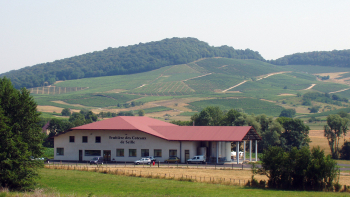
DIFFUSE AND MASSIFY INNOVATION APPROPRIATION, VIA ORGANISMES DE DÉFENSE ET DE GESTION (ODG) AND DEVELOPING LINKS WITH RESEARCH
INAO is a partner in several applied research projects designed to provide Organismes de Défense et de Gestion with ways of adapting to contemporary challenges.
As an example:
- INAO has, alongside winegrowing federations (CNIV, CNAOV, VinsIGP), ODGs, FranceAgriMer or the Institut français de la vigne et du vin (IFV), contributed to building the plan for adapting vines to climate change, based on the LACCAVE research program piloted by INRAe.
- INAO is a partner in the "Vitilience" research and development program, led by IFV and funded by CASDAR, to develop territorial demonstrators of vineyards resilient to climate change.
- INAO is also a member of the "fromages de terroirs" mixed technology network, which enables work to be carried out on issues that have a direct impact on PDO / PGI dairy specifications (raw milk, link between terroir and typicality, etc.).
INAO, KEY PLAYER IN THE INTERNATIONAL RECOGNITION OF TERROIR AND GEOGRAPHICAL INDICATIONS
Since 1948, INAO has been working to extend the recognition of Appellations d'Origine beyond wine. This mission became official in 1990, with the inclusion of all agricultural and food products. From then on, the Institute accompanied the construction of the European PDO and PGI framework, while actively participating in the international recognition of Geographical Indications by the WTO in 1994.
For 12 years, it has worked with INRA on a research program to gain recognition for AOC-IGP by international food organizations. The two organizations established the scientific bases linked to the specific organization of terroirs, taken into account in 2005 by UNESCO, then in 2010 by the OIV with the definition of wine terroir.
This dynamic culminated in 2015 with the signing of the Geneva Agreement on the International Protection of Geographical Indications, which came into force in 2020.
TO ADAPT TO ACCELERATING CLIMATE AND SOCIETAL CHANGES, INAO DEVELOPS A REGULATORY FRAMEWORK ENABLING THE EASY INTRODUCTION OF INNOVATIONS INTO CHARACTER SHEETS WHILE RESPECTING THE FUNDAMENTALS
To help vineyards adapt to climate change, or to facilitate the fight against diseases and pests by limiting the doses of phytosanitary products used, the Institute has made it possible to test Varieties of Interest for Adaptation (VIFA) in winegrowing specifications, enabling PDO wines to experiment with new, more resistant grape varieties (to heat, drought...) on a small scale, so as to preserve the typicality of the products, guaranteeing their identity and under scientific supervision.) on a small scale, so as to preserve the typicality of the products, guarantors of their identity and under scientific supervision.
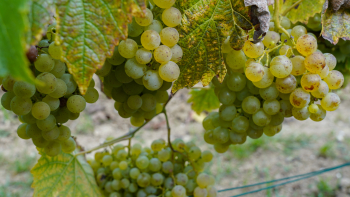
EXAMPLE OF A DEI: HOW TO DISTILL COGNAC WHILE LIMITING GREENHOUSE GAS EMISSIONS?
The Cognac sector is looking for distillation methods that emit fewer GHGs, but wants to ensure
- that organoleptic characteristics are maintained and that they are accessible to different categories of operators
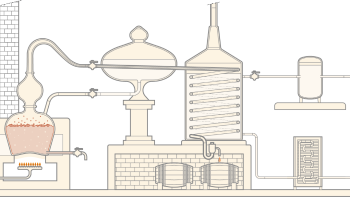
To allow for the introduction of this innovation, the specifications for distillation were modified as follows in 2024:
The "Charentais" alembic consists of a boiler heated over an open fire, a hood, a gooseneck, with or without a wine heater, and a coil with a cooling device.
However, for assessment purposes, the use of distillation equipment that does not comply with the methods defined above, as described in the protocol approved by the National Committee, is authorized, subject to the signature between the INAO, the ODG and the authorized operator of an agreement validated by the National Committee.
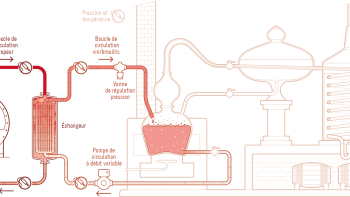
The proportion of volumes of eaux-de-vie obtained within the framework of the Innovation Evaluation Systems provided for in the present specifications, is less than or equal to 10% volume in the blend of batches of eaux-de-vie used when they are marketed to consumers.
- Consult the operating diagram of the Charentais still in compliance with the specifications (PDF format / 203ko)
- Consult the operating diagram of the Charentais still with a view to reducing GHGs (PDF format / 263ko)
ADAPTING TO NEW CONSUMER EXPECTATIONS WITH A FRAMEWORK THAT RESPECTS FUNDAMENTALS: THE CASE OF DISHARMONIZATION OF PGI WINES
INAO supports PGI producers in the development of low-alcohol wines, in response to changing consumer habits. These initiatives reflect a desire to adapt SIQO to contemporary challenges while preserving product quality and origin, via an appropriate regulatory framework.
In 2024, the Comité National des Indications Géographiques Protégées vins et cidres decided that PGI wines may be dealcoholized up to 6 degrees, provided this option is included in the specifications, and that all wines are organoleptically tested before and after dealcoholization. Below 6 degrees, ODGs will be able to conduct an experiment or mobilize the Innovation Evaluation Device (DEI).
Exhibition summary: INAO, 90 years at the service of French agriculture
Further information
- Sustainability and societal expectations
- The Varieties of Interest for Adaptation Purposes (VIFA)
- Experimentation procedures and innovation assessment device (IED) for agri-food PDOs
- Dispositif d'évaluation des innovations (DEI) pour la filière vitivinicole
- SIQO facing societal expectations: back to the regional ODG meetings
- SIQO actors' initiatives and news on sustainability
